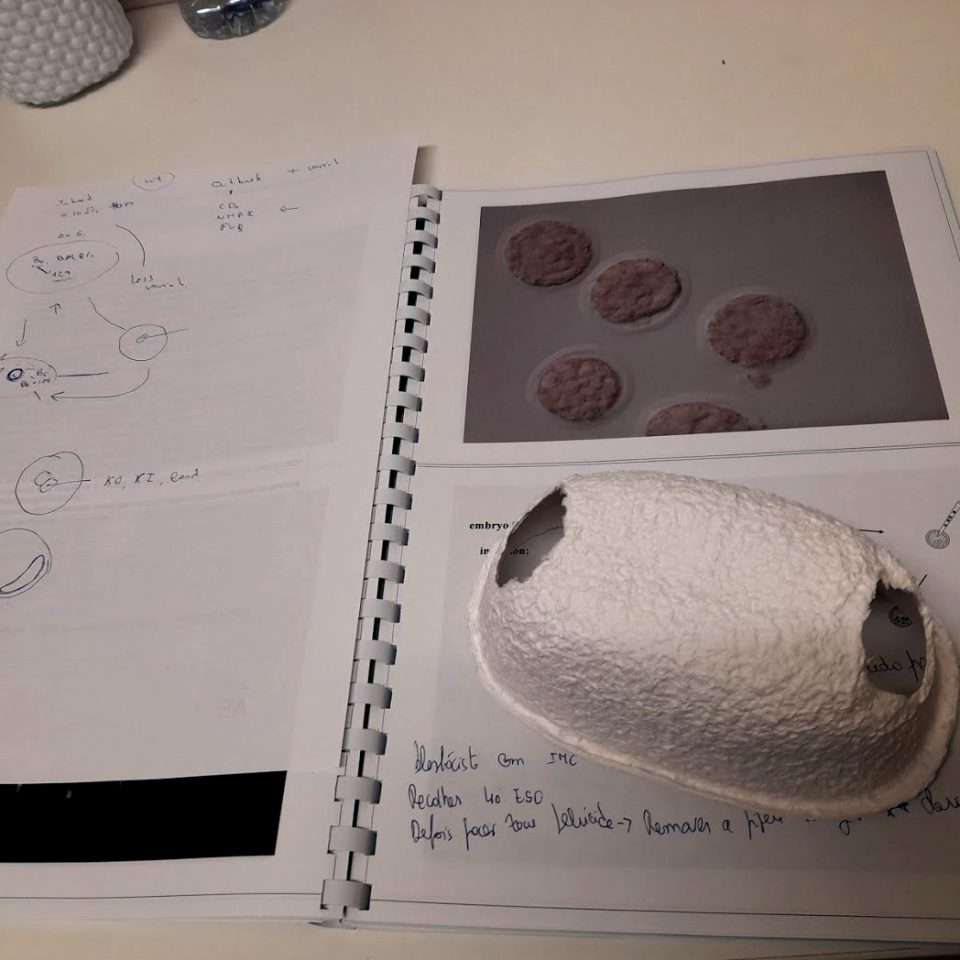“Not Trained to Cause and Manage Disease”
“Enrichment is a practice of increasing the quality of life for animals outside of their natural environment. From the simple concept of enrichment a wide variety of ideas can arise. Animal enrichment is a design process that may alleviate some of the burdens of being in the space of captivity on a daily basis. Animal enrichment is also a novel way to understand animal behavior and reveal the complexity of animal consciousness. The lab uses ethology, the science of animal behavior, to design appropriate art for chosen non-humans. Review of ethological concepts, philosophies, field based practices as well as the critical history of ethology (Animal Behavior in their Habitat) are meant to aid in enrichment device design and application.”
I am a big fan of animal enrichment. I have written about it as an art form or a practice that could use the help of informed artists. So I was pleased to find that the i3S Animal Facility was engaged in the practice of enrichment for their laboratory animals.
I was told by the manager of the animal facility that she was trained as a veterinarian. She said, ” I was not trained to cause and manage disease”. In other words, she was trained to care and heal animals. She found her way to a place that causes disease that does not go away. If a cure for these diseases can be found, many people suffering from these diseases may have a cure. But until that cure is found, these animals will be terminally ill for their lifetime. So their diseases must be managed. But, the level of care shown (animals and animal cages were kept stellar) and the emphasis on enrichment showed that people trained to care and heal had not become desensitized but were instead committed to the animals in ways that were both professional and sincere.

I was shown what could be added to mouse housing for the sake of the mice for stress relief. I was informed that enrichment increases the lifespan of knockout transgenic mice. So, mice that are programmed to have congenital mutation that cause them to be metabolically incomplete or sick do benefit from having somewhere to explore, something to play with or novel sense data (smells, tastes, etc.)

Animal Enrichment and Art Studio, Creative Design for Animal Intelligence, Adam Zaretsky and
Kathy High, Rensselaer Polytechnic Institute, Fall 2003
Potential Areas where the Arts Can Contibute to the Development of Novel Enrichment Devices:
- For free living non-humans
- To give captive non-humans control
- For other senses, not our own
- The devices were meant to:
- Elicit play
- Simulate control of the environment by the animals
- Reduce stress
- Show animal individuality
- Show animal group dynamics
- Show animal problem solving
- Show quality and integrity of animal consciousness
- Show enrichment of a particular animal personality
- Elicit sexual exuberance
The impetus of enrichment device expert assessment review of novel devices is to insure the safety and emotionally therapeutic value of an enrichment device. Part of the artistic design of enrichment devices is focused on the responsibility to thoroughly research any beings to be enriched, before designing and actuating (testing) an enrichment device. Various research methodologies are precursors towards comprehending another organism’s priorities, preferences and perceptions. Conceptual devices need to have a distinct and species specific, non-anthropomorphized understanding of the beings to be enriched.

“Some scientists have raised concerns that environmental enrichment may compromise experimental standardization by introducing variability, adding not only diversity to the animals’ behavioral repertoire but also variation to their responses to experimental treatments (e.g., Bayne 2005; Eskola et al. 1999; Gärtner 1999; Tsai et al. 2003). A systematic study in mice did not find evidence to support this viewpoint (Wolfer et al. 2004), indicating that housing conditions can be enriched without compromising the precision or reproducibility of experimental results. Further research in other species may be needed to confirm this conclusion. However, it has been shown that conditions resulting in higher-stress reactivity increase variation in experimental data (e.g., Macrì et al. 2007). Because adequate environmental enrichment may reduce anxiety and stress reactivity (Chapil- lon et al. 1999), it may also contribute to higher test sensitivity and reduced animal use (Baumans 1997).”
– Guide for the Care and Use of Laboratory Animals: Eighth Edition, pg. 54




